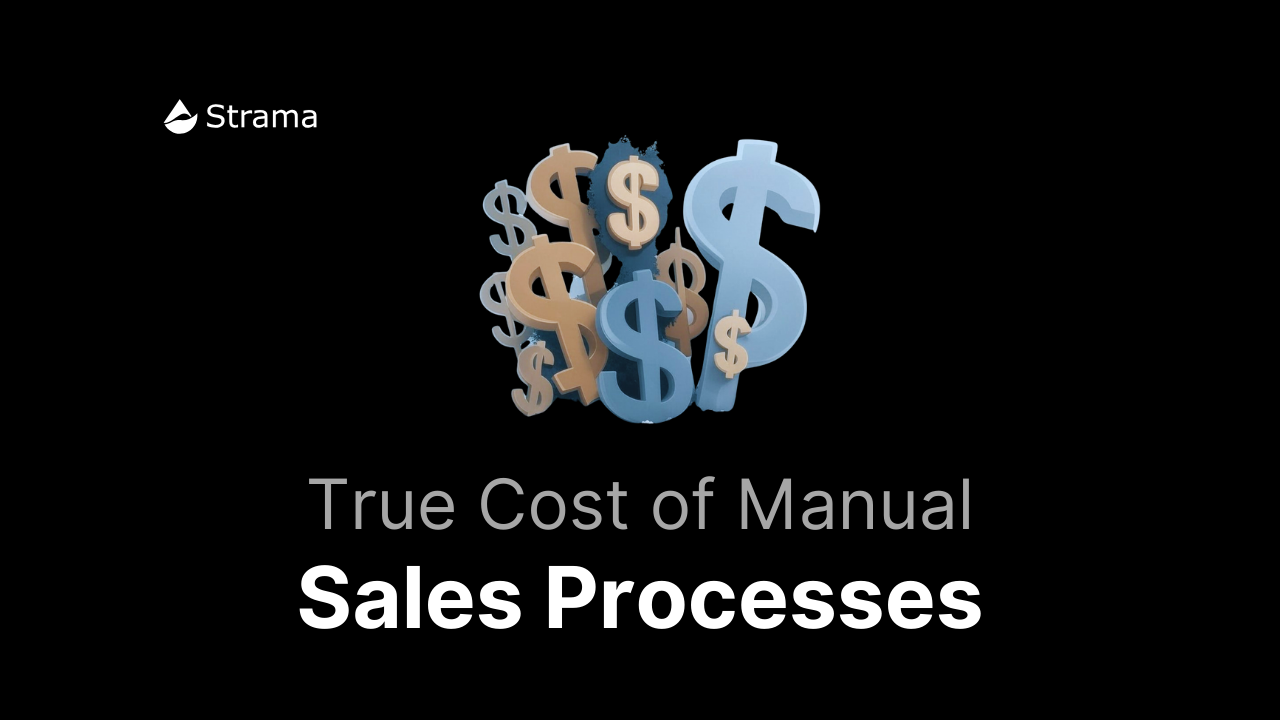Monday, January 20, 2025
Quantifying the True Cost of Manual Sales Processes


When sales leaders talk about productivity, they often focus on metrics like meetings booked or deals closed. But there's a hidden tax crushing sales team productivity: the sheer amount of time consumed by manual research and administrative tasks.
Let's put some hard numbers behind this crisis.
The Time Deficit
The data tells a stark story:
- Sales reps spend an average of 20% of their time researching prospects – that's one full workday every week (Revenue.io)
- Only 34% of a salesperson's time is actually spent selling (VSA Prospecting)
- Generic outreach methods lead to 40% lower engagement rates after the first email (SalesLoft)
Think about that for a moment: Your sales team is spending nearly twice as much time on non-selling activities as they do actually selling.
The Real Cost in Numbers
Let's break this down for a typical sales team:
- Research Time Impact
- 20% of time spent on prospect research
- For a 40-hour work week, that's 8 hours lost
- Across a team of 10 reps, that's 80 hours weekly
- Monthly impact: 320 hours of potential selling time lost
- Productivity Loss
- Only 34% of time spent selling
- 66% lost to administrative tasks
- For a team of 10, that's 264 hours weekly spent on non-selling activities
- Engagement Decay
- 40% drop in engagement after first touch
- Requires more touches to generate response
- Multiplies time spent per prospect
- Creates compound inefficiency
The Opportunity Cost
This time deficit creates a cascade of missed opportunities:
- Limited Reach
- Researching 10 prospects consumes over 5 hours
- Teams default to generic sequences
- Quality sacrificed for quantity
- Engagement rates suffer
- Pipeline Impact
- SDRs skip detailed research
- Templated sequences fail to resonate
- Engagement drops in later emails
- Pipeline quality deteriorates
- Revenue Leakage
- Missed opportunities due to time constraints
- Lower conversion rates from generic outreach
- Increased cost per opportunity
- Reduced overall sales efficiency
The Human Cost
Beyond the numbers, there's a very real human cost:
- Sales Team Burnout
- Constant context switching
- Repetitive manual tasks
- Frustration with low engagement
- Decreased job satisfaction
- Career Development Stagnation
- Less time for skill development
- Reduced strategic thinking
- Limited relationship building
- Fewer opportunities for growth
The Compounding Effect
These costs don't exist in isolation – they compound over time:
- Skill Atrophy
- Less time practicing actual sales skills
- Reduced relationship-building experience
- Degraded strategic capabilities
- Hampered team development
- Cultural Impact
- Focus shifts to activity metrics
- Quality becomes secondary
- Innovation stagnates
- Team morale suffers
Breaking Down the Alternative
What could your team accomplish with this time back?
- More Customer Engagement
- Double the number of meaningful conversations
- Deeper relationship building
- Better understanding of customer needs
- Higher quality deals
- Strategic Development
- Enhanced territory planning
- Better account strategies
- Improved team collaboration
- Increased win rates
- Professional Growth
- More time for coaching
- Skill development
- Best practice sharing
- Career advancement
The Path Forward
The solution isn't working harder or adding more tools to the stack. It's about fundamentally rethinking how we allocate our most precious resource: time.
Consider these questions:
- What percentage of your team's time is truly spent selling?
- How much revenue is locked in manual processes?
- What's the real cost of your current approach to sales productivity?
The Bottom Line
The numbers paint a clear picture: the current approach to sales productivity isn't just inefficient – it's unsustainable. Sales teams are spending too much time on tasks that could be automated and not enough time on activities that drive revenue.
The future of sales productivity isn't about squeezing more hours out of your team. It's about eliminating the hidden tax of manual processes and freeing your team to focus on what matters: building relationships and closing deals.